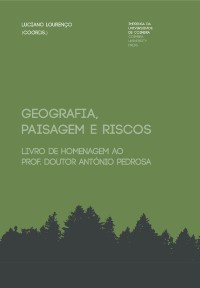Please use this identifier to cite or link to this item:
https://hdl.handle.net/10316.2/90613| Title: | A paisagem do Cerrado no Triângulo mineiro: os relatos dos viajantes naturalistas no século XIX no Brasil | Other Titles: | Cerrado landscape on the Triângulo mineiro region: the stories of naturalist travelers in the 19th century Brazil | Authors: | Carvalho, Isabele de Oliveira Pedrosa, António de Souza |
Keywords: | Cerrado;natural landscape;cultural landscape;nineteenth century travellers;Cerrado;paisagem natural;paisagem cultural;viajantes do XIX | Issue Date: | 2016 | Publisher: | Imprensa da Universidade de Coimbra | Journal: | http://hdl.handle.net/10316.2/39922 | Abstract: | The idea of the Cerrado as a biome or untouched bio-geographical
area, must be rethought, since it has been successively appropriated by
man throughout its history. Based on the records left by nineteenth
century travellers, it tries to do an interpretive reading of the Triângulo
Mineiro landscape, demonstrating that it was a deeply humanized
landscape and not "immense solitudes" as it was described. This fact
resulted from the occupation of this area for thousands of years by
the Caiapós indians and later by settlers. The techniques used since
the occupation by indigenous societies and then during the period
of the gold and precious stones mining, or even by agriculture and
livestock, changed the natural landscape of Cerrado, turning it into
a historical and culturally built landscape. The landscape concept is
very important for this work, which aims an interpretative analysis
of the Cerrado landscape in the nineteenth century, according to
the perspectives of travellers, including St Hilaire. A ideia do Cerrado, como um bioma ou domínio biogeográfico intocado, deve ser repensada, já que foi sendo sucessivamente apropriado pelo homem ao longo da sua história. Com base nos registos deixados pelos viajantes do século XIX, intenta-se fazer uma leitura reinterpretativa da paisagem do Triângulo Mineiro, demonstrando que era uma paisagem profundamente humanizada e não “solidões imensas” como era descrito. Esse fato resultou da ocupação dessa área, durante milhares de anos pelos índios caiapós e, posteriormente, pelos colonizadores. As técnicas utilizadas desde a ocupação pelas sociedades indígenas e depois durante o período da mineração do ouro e das pedras preciosas, ou mesmo pela agricultura e pecuária modificaram a paisagem natural Cerrado transformando-a numa paisagem histórica e culturalmente construída. A conceptualização da paisagem é de suma importância para este trabalho que tem como objetivo uma análise reinterpretativa da paisagem do cerrado no século XIX, de acordo com as perspectivas dos viajantes, nomeadamente St Hilaire. |
URI: | https://hdl.handle.net/10316.2/90613 | ISBN: | 978-989-26-1232-4 978-989-26-1233-1 (PDF) |
DOI: | 10.14195/978-989-26-1233-1_4 | Rights: | open access |
| Appears in Collections: | Geografia, paisagem e riscos: livro de homenagem ao Prof. Doutor António Pedrosa |
Files in This Item:
| File | Description | Size | Format | |
|---|---|---|---|---|
| a_paisagem_do_cerrado_no_triangulo.pdf | 787.21 kB | Adobe PDF |  |
Items in DSpace are protected by copyright, with all rights reserved, unless otherwise indicated.
